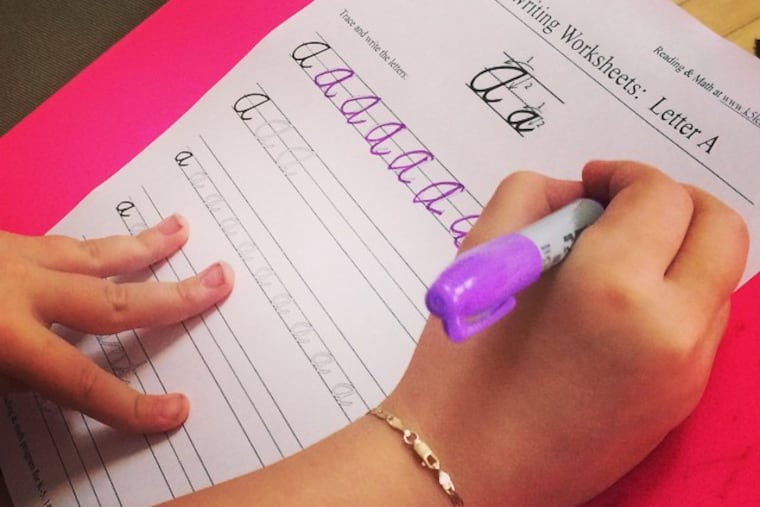New Jersey legislator introduces bill that would require students to learn cursive
The reintroduction comes as more students use keyboards and screens to learn information and take notes.

New Jersey’s elementary school students would be required to learn, read, and write cursive by the end of third grade, under a bill now in the state Assembly.
“In some cases, children are entering middle school without knowing how to sign their own name in cursive,” said Assemblywoman Angela McKnight, a Democrat who represents parts of Hudson County. “We are doing our children a disservice by not teaching them a vital skill they will need for the rest of their lives.”
McKnight introduced the bill last week.
A news release from McKnight’s office cites data from Scholastic that learning cursive helps children become better spellers, and stronger readers and writers.
Cursive instruction became a rarity in public elementary classrooms after the Common Core dropped its requirement in 2010. However, since then, many states, including Illinois, Ohio, and Texas, have made efforts to reintroduce cursive requirements.
The efforts come as more students use keyboards and screens for learning and taking notes. Studies show that drawing a letter by hand activates a child’s neurological centers as reading and writing does for adults, while using a keyboard produces little effect. It’s also been shown that students who hand-write their notes better retain information.
The revival also comes as an international exam shows that American 15-year-olds’ reading and math abilities have stagnated since 2000. The results of the Program for International Student Assessment were announced Tuesday, about a month after the National Assessment of Educational Progress showed that the average eighth-grade reading scores declined in more than half of the states compared with 2017.
“Our world has indeed become increasingly dependent on technology, but how will our students ever know how to read a scripted font on a word document, or even sign the back of a check, if they never learn to read and write in cursive?” McKnight said.
The bill now heads to the Assembly Education Committee for review. If enacted, the requirement would begin the following school year.